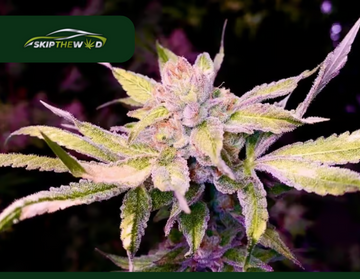As cannabis continues to gain acceptance across the world, there is an increasing need for public education surrounding its use, safety, and regulation. While many are drawn to the potential therapeutic benefits and the recreational appeal of cannabis, misconceptions, misinformation, and a lack of proper guidance remain prevalent. This underscores the importance of a well-rounded cannabis education that informs consumers of safe consumption practices, potential risks, and the legal landscape.
The Importance of Cannabis Education
Cannabis education is essential in ensuring that both medical and recreational users have a thorough understanding of the plant, its effects, and its safe usage. With the growing legalization movement, the number of first-time users and curious consumers has risen significantly. Many of these individuals may not fully comprehend the effects of cannabis, its legal status, or how to consume it responsibly.
Shifting Perceptions
For many years, cannabis was demonized as a dangerous drug with severe legal and social consequences. As legalization sweeps through various states and countries, these long-standing stigmas are beginning to fade. However, the change in perception has not always been accompanied by proper education. Without it, the risk of misuse or overconsumption remains a concern.
Cannabis education helps to shift the conversation from one of stigma and fear to one that encourages responsible use, empowering individuals to make informed decisions based on facts rather than fear or misinformation.
The Components of Comprehensive Cannabis Education
Cannabis education should cover multiple facets, including its history, legal status, health benefits, risks, and safe consumption methods. Understanding these components allows users to navigate their cannabis experiences in a safe and informed manner.
The History and Legal Landscape of Cannabis
Cannabis has a long history, stretching back thousands of years. It has been used in various cultures for medicinal, religious, and recreational purposes. However, in the 20th century, cannabis became a controlled substance in many parts of the world, leading to its criminalization.
With legalization efforts now expanding, it’s important for users to stay informed about the legal status of cannabis in their region. Each country and state may have different regulations regarding cannabis possession, sale, and use. Some may permit medical use, while others allow both recreational and medical consumption. Without proper knowledge of these laws, individuals risk facing legal consequences.
Understanding the Health Benefits of Cannabis
One of the main reasons for cannabis legalization is its potential therapeutic benefits. Medical cannabis is widely recognized for its effectiveness in managing conditions such as chronic pain, anxiety, insomnia, epilepsy, and more. Cannabinoids like THC and CBD interact with the body’s endocannabinoid system, helping to regulate mood, pain, and inflammation.
For individuals seeking to use cannabis for medical purposes, understanding the specific benefits and appropriate doses is crucial. Medical users need education on how cannabis can address their symptoms while avoiding unwanted side effects or interactions with other medications.
Awareness of the Risks and Side Effects
While cannabis has many potential benefits, it’s important to recognize that there are risks associated with its use, particularly when consumed irresponsibly. These risks may include:
- Short-Term Effects: Memory impairment, altered judgment, and decreased motor coordination are common short-term effects, especially with high-THC strains. This can make certain activities, like driving, dangerous.
- Long-Term Effects: Regular, heavy use of cannabis, especially starting at a young age, can lead to cognitive issues or a decrease in motivation, and in some cases, dependence or Cannabis Use Disorder.
- Mental Health Considerations: Cannabis use can exacerbate anxiety or trigger psychosis in individuals predisposed to mental health issues. Education is vital in helping these individuals make informed choices about whether cannabis is suitable for them.
Safe Consumption Methods
Different methods of cannabis consumption come with varying levels of intensity, onset times, and potential risks. Educating the public on safe consumption methods is key to avoiding unintentional overconsumption or negative experiences. The most common consumption methods include:
- Smoking: One of the fastest ways to feel the effects of cannabis. However, smoking also comes with risks related to lung health and should be used cautiously.
- Vaping: Seen as a potentially safer alternative to smoking, vaping allows users to inhale vapor rather than smoke. However, quality control is crucial as low-quality vape cartridges have been linked to health issues.
- Edibles: Popular for their discreet and long-lasting effects, but the delayed onset (often 30 minutes to two hours) can lead to accidental overconsumption. First-time users should start with a low dose and wait before taking more.
- Tinctures and Oils: Consumed sublingually (under the tongue) or added to food, tinctures and oils offer a precise and controlled way to consume cannabis without inhaling smoke or vapor.
- Topicals: Cannabis-infused creams and lotions applied to the skin can provide localized relief for pain and inflammation without producing any psychoactive effects.
Educating consumers on the proper dosage, onset times, and effects of each method is essential to ensuring a positive and safe experience.
The Need for Responsible Use
Responsible cannabis use is critical to minimizing harm and promoting a healthy relationship with the plant. This includes:
- Knowing Your Tolerance: Each individual’s tolerance to cannabis varies, and the effects can differ based on weight, metabolism, and frequency of use. Users should start with a low dose, particularly with edibles or concentrates, and gradually increase as they understand their tolerance level.
- Mindful Consumption: It’s important to be aware of your surroundings and avoid engaging in activities like driving, operating machinery, or making important decisions while under the influence of cannabis.
- Setting Clear Boundaries: Just because cannabis is legal does not mean it’s without risk. Users should establish boundaries for consumption, ensuring that it doesn’t interfere with their personal or professional lives.
Public Health Campaigns and Awareness
Public awareness campaigns can play a significant role in spreading accurate information about cannabis. By focusing on both the potential benefits and risks, these campaigns can guide new users and help normalize the responsible use of cannabis. Additionally, these efforts can dispel myths and provide clarity on legal issues, making the cannabis landscape easier to navigate for both consumers and businesses.
Conclusion: Encouraging Safe Consumption Through Education
As cannabis continues to grow in popularity and acceptance, public education must keep pace to ensure that people understand how to use it safely and responsibly. Comprehensive cannabis education is essential to address both the potential benefits and risks, ensuring users can make informed decisions.
At Skip the Weed, we believe that responsible consumption starts with knowledge. Our selection of high-quality cannabis products includes:
- Zookies Kush strain: A well-balanced hybrid that offers a relaxing experience while keeping the mind clear. Ideal for both new and experienced users seeking a moderate, balanced high.
- Super Skunk strain: For those looking for a strong, full-body experience, this potent strain delivers powerful effects that make it a favorite among experienced users.
By promoting awareness and offering safe, high-quality products, we aim to support responsible cannabis use for everyone. Always make informed decisions, and enjoy the benefits cannabis can provide when used wisely.









